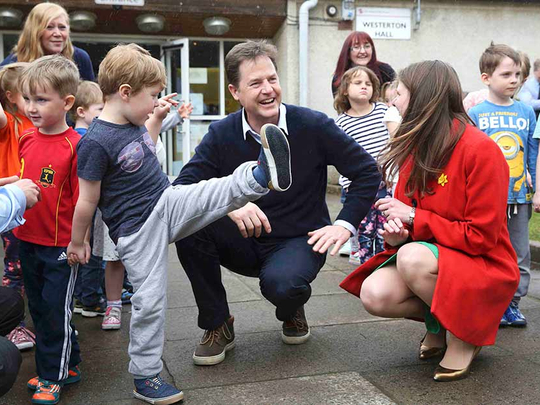
LONDON: Britain's general election on Thursday promises to be the closest in living memory with newer, smaller parties on the right and left threatening to disrupt the old order.
Most of the 650 seats in the House of Commons will not change hands on the night. Instead, the election is likely to hinge on the results in a few dozen key marginals.
Here are ten seats which could help decide who forms the next government after the election.
SHEFFIELD HALLAM: Liberal Democrat leader Nick Clegg could be in danger of losing his seat - and his job. His centrist party has said it could team up with either the Conservatives or Labour to govern after the election. Clegg is seen as pro-Conservative but if the Liberal Democrats end up with a new leader, it could change who they are inclined to work with.
SOUTH THANET: Nigel Farage, leader of the anti-EU UK Independence Party, is hoping to enter parliament by taking this southern English seaside seat from the Conservatives. He has said he will resign if he does not win in what would be a huge blow for UKIP.
PAISLEY AND RENFREWSHIRE SOUTH: One of Labour's biggest names, campaign coordinator Douglas Alexander, is in danger of losing his seat to a 20-year-old Scottish National Party (SNP) candidate, Mhairi Black. If that happens, it would symbolise the major gains the SNP expects to make from Labour in what was once one of its heartlands.
HAMPSTEAD AND KILBURN: The battle for London could shape the final result and the Conservatives are hoping for an important symbolic win in this affluent constituency. At the last election in 2010, Oscar-winning actress Glenda Jackson held the seat for Labour by just 42 votes, the narrowest margin in England.
GORDON: Former SNP leader Alex Salmond is expected to comfortably defeat his Liberal Democrat opponent in this rural northeast Scottish seat, securing a return to Westminster and a key position in possible post-election coalition negotiations.
WIRRAL WEST: This affluent seat just outside Liverpool is currently Conservative-held but if Labour captures it, that could be an indicator it was gaining ground nationally. Seen as one of Britain's most reliable "bellwether" seats which predicts the eventual outcome of the election overall.
INVERNESS, NAIRN, BADENOCH AND STRATHSPEY: Another danger zone for the Liberal Democrats as Danny Alexander, the second most visible figure in the coalition government alongside Nick Clegg, fights to hold on in the Scottish Highlands.
DEWSBURY: As well as taking votes from the Conservatives, UKIP also hopes attract disillusioned voters in another Labour heartland, the north of England. The Conservatives narrowly won Dewsbury - an ethnically diverse seat in the heart of Yorkshire - in 2010, but Labour has identified it as one of its "battleground targets" in May.
MORLEY AND OUTWOOD: Shadow finance minister Ed Balls held this northern English seat for Labour in 2010, but there was a 9.3 percent swing to the Conservatives. Prime Minister David Cameron's party wants to topple Balls - a belligerent opponent in charge of Labour's economic policy - in what would be a damaging defeat.
ST IVES: One of the prettiest seats in Britain, it is currently held by Liberal Democrat Andrew George but is hotly contested by the Conservatives. It will be a key test of the Liberal Democrat claim that independent-minded MPs can hold on despite the drop in support for the party nationally.












